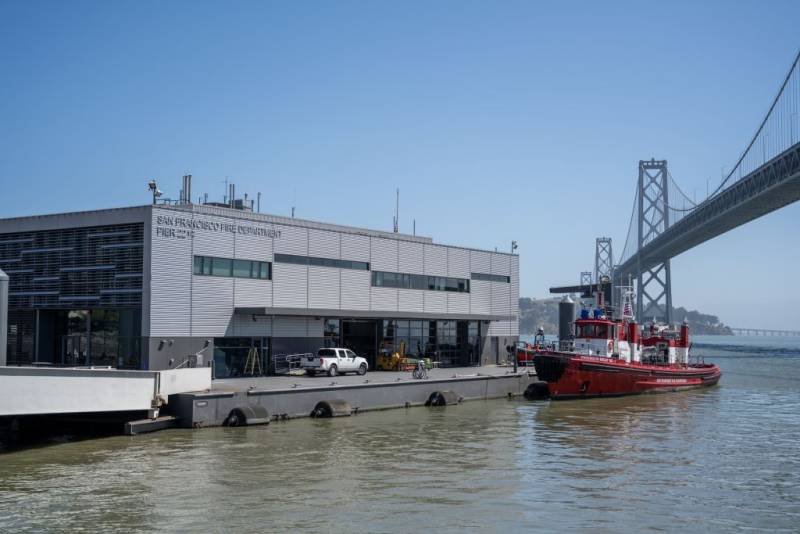A fire truck parked next to a floating station on San Francisco Bay sits in the path of rising seas. Floodwaters surround a police station during a massive atmospheric river. Motorcycle cops are trapped, unable to leave for hours.
These are not scenes from a Hollywood disaster flick but a stark reality laid out in the latest San Francisco Civil Grand Jury report, finding that a fractured approach to city infrastructure and a lack of fiscal transparency leave critical public safety assets vulnerable to climate change.
The report published Thursday, “Building San Francisco: Designing, Constructing, and Maintaining City Infrastructure,” is the second within a month from the 19-person volunteer panel to address the effects of climate change. The jury discovered a need for more transparency in how San Francisco agencies, primarily the Department of Public Works, prepare the city for a far wetter world.

